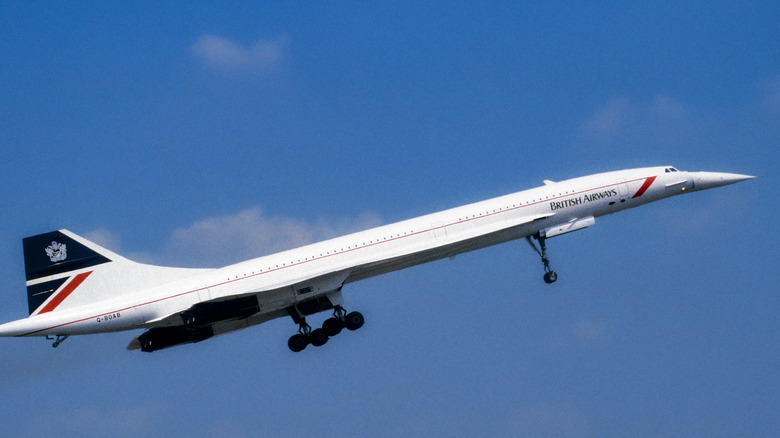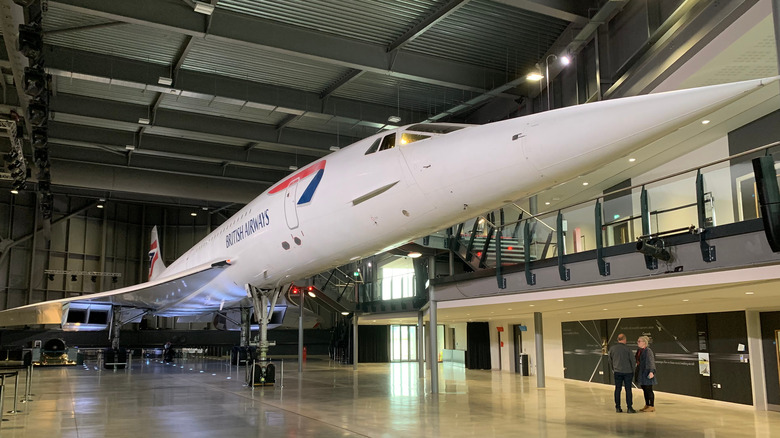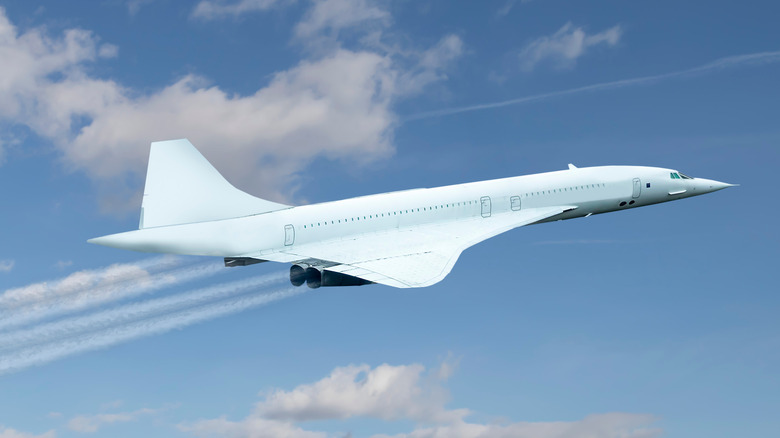The Truth About The Last Flight Of The Concorde
Many of us think of technological progress as an endless upward march, with all new inventions leading to some inevitable future where anything is possible. Casting doubt on this, though, is the story of the Concorde — a supersonic commercial jet that was a technological marvel at the time of its 1976 introduction, and was considered the height of luxury in the late 20th century — but after October 24, 2003, never made another commercial flight. For nearly twenty years, faster-than-sound air travel has been entirely out of the reach of consumers, and it shows no signs of coming back.
What killed the Concorde? There were obviously a number of factors, but the most dramatic was a deadly crash that occurred when a Concorde jet was taking off in Paris on July 25, 2000. After nearly a quarter-century of incident-free operation, the Concorde got a devastating black mark when a blown tire struck one departing Concorde's fuel tank and ignited it, setting the plane ablaze and causing a crash that killed 113 people (via Smithsonian). Add to that the September 11 terrorist attacks, which occurred just over a year later and had devastating effects on the entire aviation industry — plus the rise of the internet, which made traveling for business much less of a necessity for many — and the Concorde just no longer made economic sense for its two operators, Air France and British Airways.
The Concorde was retired permanently, and we may never see its like again.
The story of the Concorde
It's almost impossible to overstate just how quickly transportation technology has improved over the last century. The Wright Brothers made their first flight in 1903, and it was less than 40 years later that Air Force pilot Chuck Yeager broke the sound barrier. What this meant was that faster-than sound travel was theoretically possible from just after World War II on.
In the 1960s, several national governments, including the U.S. and the U.S.S.R, had programs in place to develop supersonic commercial jets, but it was the British and French governments, working together, who finally pulled it off, in 1969. When aircraft builders BAC and Aerospatiale announced the Concorde, they were inundated with orders from airlines around the world — until the 1973 oil crisis led to mass cancelations (via Business Insider). It wouldn't be the first time economic realities would block the Concorde's ascent.
Still, the Concorde found its niche, mainly as a shuttle for wealthy passengers looking to cross the Atlantic as quickly as physically possible. The Concorde's two long-standing routes — New York to London and New York to Paris — each took upwards of seven hours on conventional aircraft, but on Concordes took only about three and a half. For those who could afford the $9,000 cost of a ticket, it was a huge time-saver. Given the price, though, Concorde flights mainly catered to celebrities, billionaires, and royalty — it's not hyperbole to say the in-flight meal usually consisted of champagne and caviar (via Traveler).
The final flight of the Concorde
By 2003, though, the writing was on the wall. The 2000 explosion had forced a mass grounding of all active Concordes so that their fuel tanks could be reinforced; when they were ready for flight again, they were again hampered by 9/11. In May of 2003, all of Air France's Concordes were permanently grounded; British Airways announced their intention to discontinue Concorde service in October of the same year. The airline industry had reached the end of an era.
The knowledge that the October 24, 2003, flight from New York's JFK to London's Heathrow would be the last, and that there were only 100 seats available, created something of a run on tickets. One Ohio couple who was aboard was reported to have spent $60,000 apiece for the privilege of flying. Other passengers included celebrities like model Christie Brinkley and actress Joan Collins (via History).
Once the plane got in the air over the Atlantic, it was joined by two other Concordes bound for London; the three craft landed in succession to the cheers of an awaiting crowd. And that was it for the Concorde — no longer can you cross the Atlantic Ocean at Mach 2.02.
Rest in peace, Concorde. You flew too close to the sun. Not literally, but sort-of-literally.


